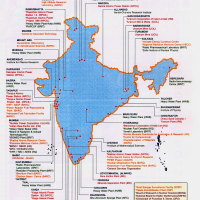MUMBAI CONSULTATION ON POLICE REFORMS: ‘BETTER POLICING -SAFER CITY: HOW TO MAKE IT HAPPEN
Date: Friday, 22 February, 2013
Venue: USTAV BANQUET HALL, JAMSHEDJI TATA ROAD CHURCHGATE
PRESS STATEMENT ON THE DELIBERATIONS AT THE ABOVE MEETING: 22/02/13
The COMMONWEALTH HUMAN RIGHTS INITIATIVE [ CHRI] Delhi in association with Citizen Initiative for Peace (CIP), Praja, PCGT, M R. Pai Foundation. Akshara, Forum against Oppression of Women and Forum of Free Enterprise organized this event.
A meeting of over 80 of the leading activists representing over 30 organisations / civil society in Mumbai voiced deep concern about the state of women’s safety and indeed the safety of all mumbaikars.
Attended by no less personage as Shri Julio Rebeiro, [ Former Mumbai Police Commissioner], Dr. Shri A.N Roy [Former Director General of Police, Maharashtra ], Shri Shailesh Gandhi [ former Central Information Commissioner ]. Mr. Satish Sahney [Former Mumbai Police Commissioner], leading Advocates, Women and Rights Activists and concerned Citizens.
The discussions pointed out that despite the bitter complaints against the inefficiencies of policing in Mumbai, its bias’s and violence, police performance was failing the public. Bandage remedies such as transfers or punishment postings will not do. There is a need for root and branch improvement. The constabulary have to be better equipped not with arms and ammunition but with a better value system that ensures that there will be more responsive and less illegal policing and better all round every day performance.
The leadership must ensure that the ordinary constable has good working conditions decent wages and better hours of work. Training must be imparted to the police personnel in educating on high standards to human rights, gender sensitivity and respecting multi-religious diversity. At the same time they must take responsibility for lapses in policing and be completely accountable.
The political administration is responsible for delivering better policing that has the confidence of the public in Maharastra.
The meeting also called the State Government to implement the Police Reforms as outlined in the Supreme Court Judgement of 2006. The Supreme Court had given certain directions in view of the urgent need for preservation and strengthening of the Rule of Law. It had prescribed the setting up of three institutions in the state: A State Security Commission, Police Establishment Board and Police Complaints Authority, in other words calling for a systemic changes into the functioning of the PoliceDepartment.
It must lay down policing policies and targets to be achieved in the year after creating a political plan. This plan must be made in consultation with local communities and be a public document against which police performance can be evaluated and judged. It is only when communities are engaged with policing that the police will gain public confidence.
The meeting called for the State Security Commission to put in place a credible planning process in which enhanced safety of women and vulnerable groups such as children, migrants and minorities is specially addressed.
The meeting also agreed to a plan of action to make this an election issue for the forthcoming 2014 elections and demand from the Political parties to not only include this in their manifesto but ensure that the Police Reforms are implemented thereafter .
Hence it becomes necessary for the incumbent Government to bring in the police reforms without any further delay during their current tenure.
The meeting agreed to work together with police and administration in creating better policing outcomes for the city and asked all Mumbaikars to join in this effort.
Issued by Dolphy D’souza, Citizens Initiative for Peace [CIP] & Ms Maja Daruwalla , Director CHRI, Organising Committee and the participants of the meeting .
Cell: 9820226227 Email: dolphydolphy13@gmail.com
Dolphy Dsouza – 9820226227
Citizens Initiative for Peace [CIP]
43, Kalina, Santacruz East,
Mumbai 400 029.
Email: dolphydolphy13@gmail.com
















